Indian Summer - Montana Style
This Year's Three Best Glacier Destinations for Fall Colors
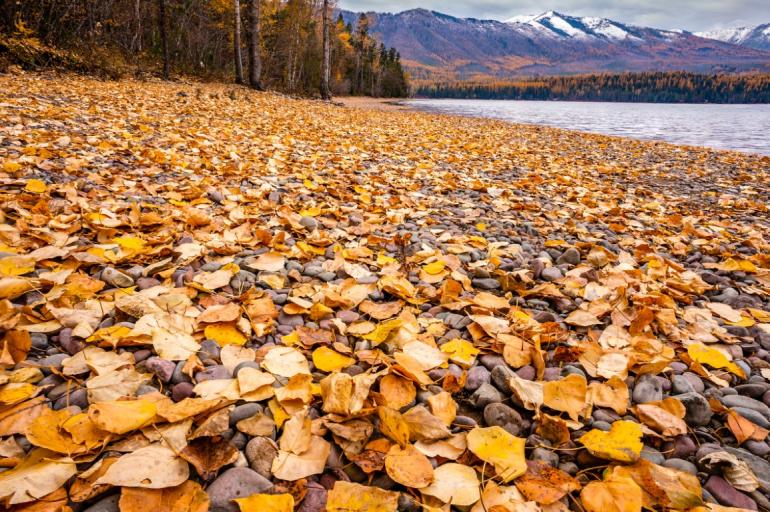
Take crisp, cool mornings and sunny, warm days – mix in a little early snow high in the mountains and add some beautiful fall foliage, elk bugling during their rut in the High Country, and you have a recipe for what many believe are the very finest days of the year to get out and enjoy what Montana has to offer. Best of all, it’s usually long after the summer crowds (and mosquitoes!) have gone home. This is Indian Summer - Montana style!
Where better than Glacier National Park, with its rich, diverse ecosystems, to really experience the true splendors of Fall? From high mountain shrubs, to lower aspens, to river bottom cottonwoods, to the glorious tamarack “finale”, there is a progression of autumn colors that is spread out over about five weeks, so there is usually plenty of time to take in at least some of the show.
From drive-in or low-impact hikes to more ambitious climbs, here are 3 destinations in the Park to help you find the best Fall colors this year.
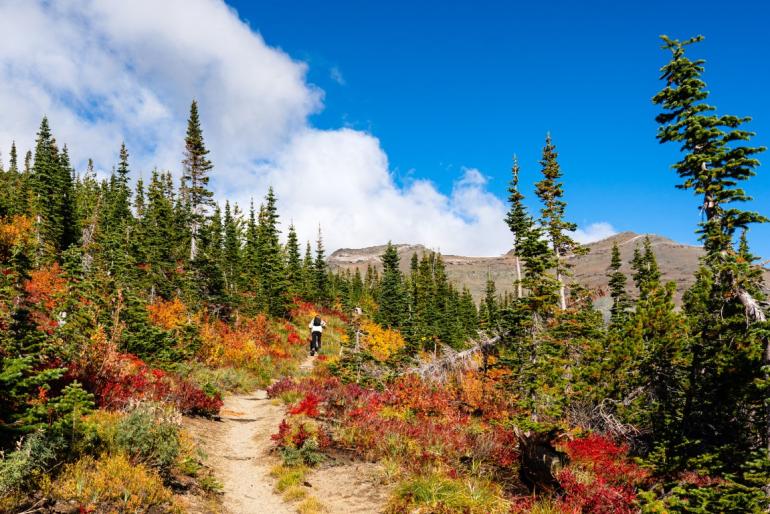
FireBrand Pass/Autumn Creek
Where: Near Marias Pass, Highway 2
Why go: Beautiful hike to the pass, great views and color from the top; lower elevation hike through aspens and meadows.
When to go: Late September for up high; early October for lower elevations.
Nearby campgrounds: Summit Campground at Marias Pass (Forest Service)
Activities: Hiking/photography: Firebrand Pass – moderate, 4.9 miles, 2210 ft elevation gain; Autumn Creek – easy, up to 15 miles total, level elevation gain.
How to get there: Highway 2 at mile marker 203, approximately 5 miles east of Marias Pass and 6 miles west of East Glacier.
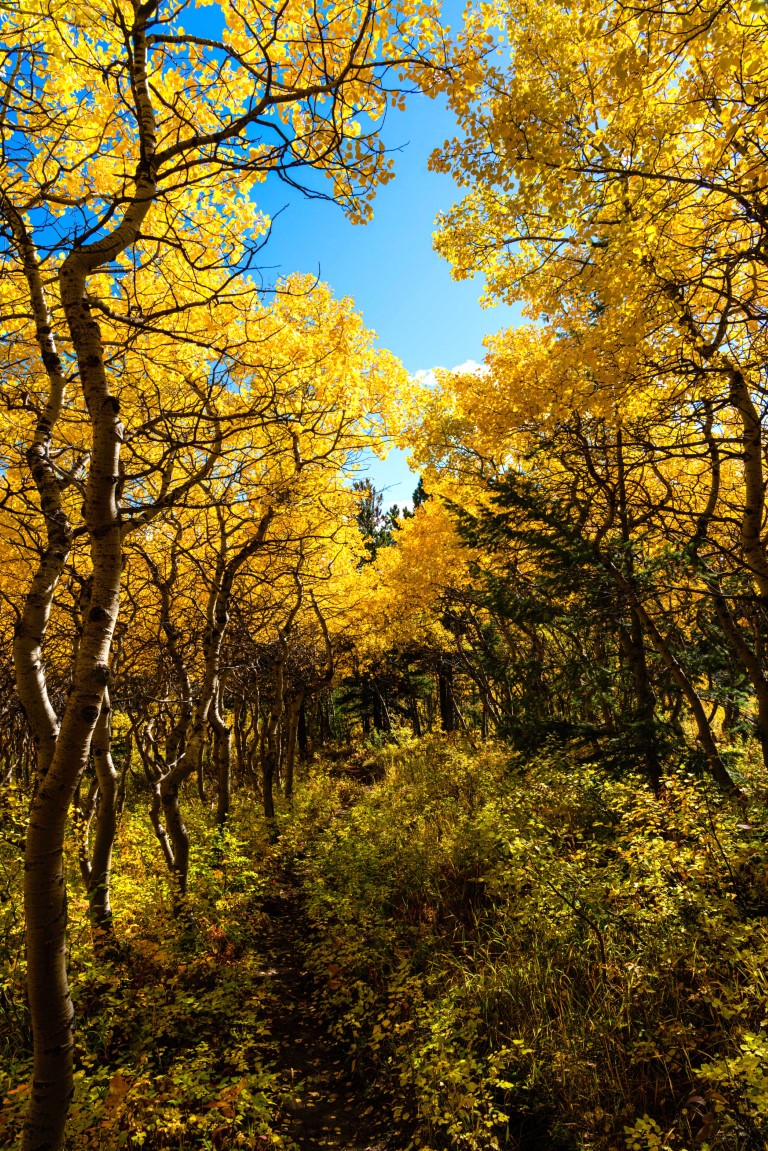 The Firebrand Pass/Autumn Creek trails traverse both high country and lowlands, so it takes in zones that show off their colors both at the end of September (Firebrand Pass – high elevation shrubs, such as mountain ash, huckleberry and grouse whortleberry, which turn deep red), and early October (Autumn Creek – aspens and cottonwoods, for yellows and light oranges). The pass gets its name from a wildfire that raced over the ridge line in the early 1900s, but there is no trace of that now.
The Firebrand Pass/Autumn Creek trails traverse both high country and lowlands, so it takes in zones that show off their colors both at the end of September (Firebrand Pass – high elevation shrubs, such as mountain ash, huckleberry and grouse whortleberry, which turn deep red), and early October (Autumn Creek – aspens and cottonwoods, for yellows and light oranges). The pass gets its name from a wildfire that raced over the ridge line in the early 1900s, but there is no trace of that now.
Park at mile marker 203 on Highway 2. A dirt trail leads across the railroad tracks and into the Park. Almost immediately the trail passes through lush aspen groves. After 1.4 miles the trail crosses the Autumn Creek Trail. Turning left or right on this relatively level trail takes you through more aspen groves and meadows, affording tunnel views of the John Stevens Canyon through the bright yellow canopy. From there, the Firebrand Pass Trail begins to climb, first through more aspen groves, but eventually emerges with sweeping views to the southeast to the Badger-Two Medicine area, south of Highway 2. The trail is lined with brick red mountain ash full of bright crimson berries. Circling around Calf Robe Mountain, the pass is reached at the 3.5-mile mark from the junction with Autumn Creek Trail, affording expansive views to the west of the southern reaches of the Park.
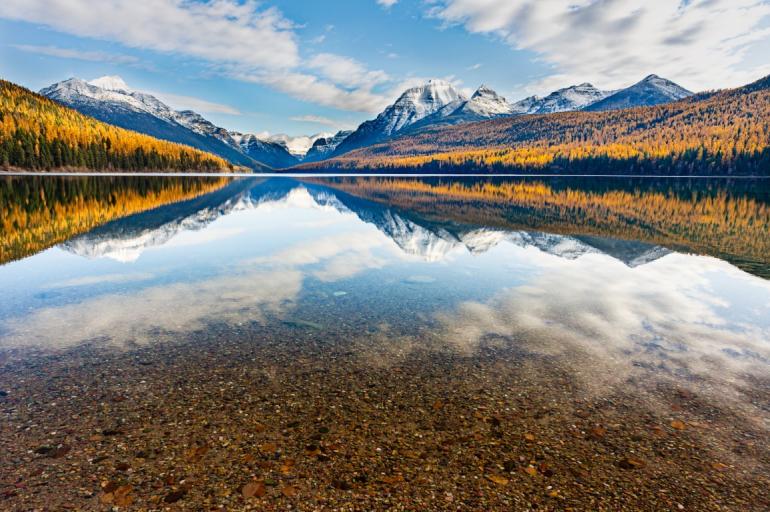
Bowman Lake
Where: Northwest portion of Glacier, off the North Fork of the Flathead River.
Why go: Tamaracks – lots of tamaracks!!
When to go: Third week, October
Nearby campgrounds: Bowman Lake Campground – open as a “primitive” campground through late October, weather permitting. (Bring your own water).
Activities: Hiking/photography: Quartz Lake Loop – moderate, 13 miles roundtrip, 1500 ft elevation gain;
Numa Ridge Lookout – difficult, 5.6 miles, 2900 ft elevation gain.
Kayaking Bowman/Kintla Lakes
How to get there: Enter the Park just north of the small settlement of Polebridge on the North Fork Road north of Columbia Falls. A gravel road then climbs 6 miles to Bowman Lake. It is not suitable for larger trailers. There is a fork that leads to Kintla Lake, which also has a campground.
 While there are aspen stands lower down near the valley floor, the reason to come to Bowman Lake is for the spectacular display of tamaracks. Once these larches start turning gold, it seems that the whole drive up from Columbia Falls is through one massive tamarack forest. It is golden virtually the whole way along this road to the Canadian border. The great thing about Bowman Lake is that once you are there, you can either just kick back and enjoy the show from the lake shore or get out there and be a more active participant.
While there are aspen stands lower down near the valley floor, the reason to come to Bowman Lake is for the spectacular display of tamaracks. Once these larches start turning gold, it seems that the whole drive up from Columbia Falls is through one massive tamarack forest. It is golden virtually the whole way along this road to the Canadian border. The great thing about Bowman Lake is that once you are there, you can either just kick back and enjoy the show from the lake shore or get out there and be a more active participant.
If hiking is your passion, the Quartz Lake Loop beckons. This is a 13-mile trail that leads over Cerulean Ridge, around the two Quartz Lakes (Upper and Lower) and back to Bowman Lake. If you really want a challenge, there is the climb to the Numa Ridge Lookout with stunning views of the mountains at the north end of the Park. The weather is often very calm at this time of year, so it’s also a great time to explore the lake by kayak. Either way, it’s tamaracks in all directions.
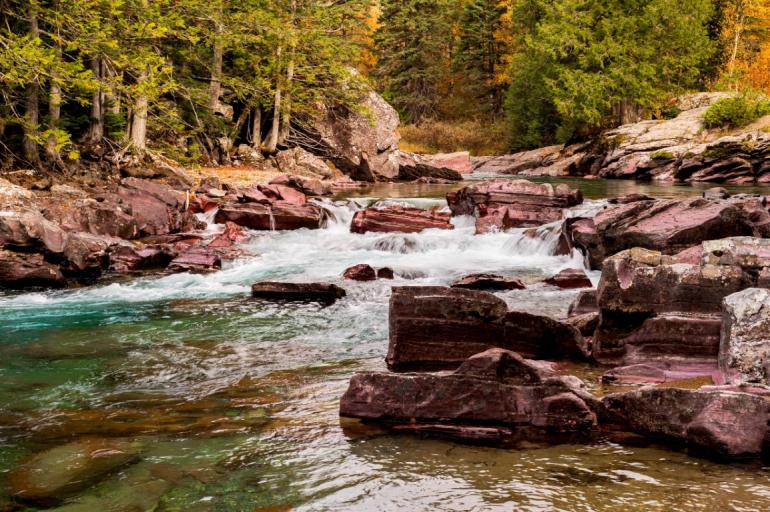
Lake McDonald
Where: Apgar Village near West Glacier
Why go: Many different hikes for all levels offering fall colors across several weeks including late cottonwoods and tamaracks.
When to go: Late September through October.
Nearby campgrounds: Apgar Picnic Area.
Activities: Hiking/photography: lots of different types of hikes, Kayaking Lake McDonald
How to get there: Entrance to Park off Highway 2, 33 miles east of Kalispell.
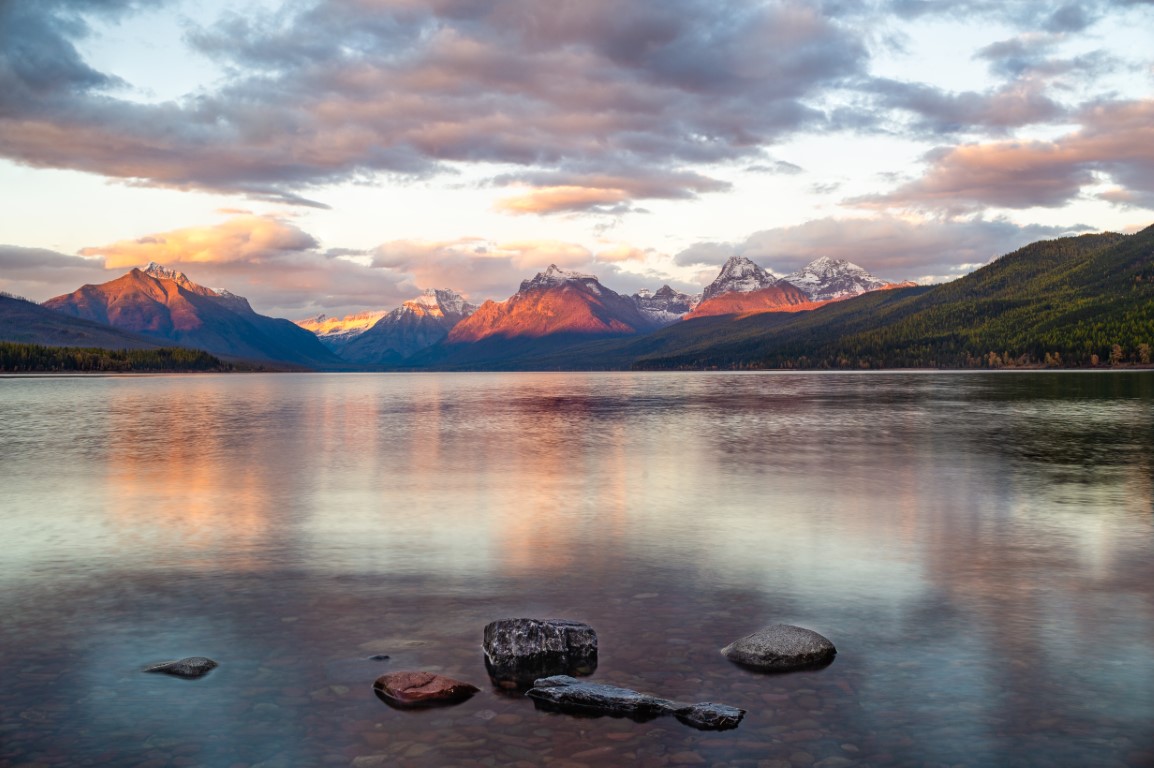 There’s the level hike along McDonald Creek through stands of aspens and cottonwoods offset by the red rocks and the blue water; the ever popular Avalanche Lake (easy – 2.3 miles, 600 ft elevation gain); to more ambitious climbs with sweeping views, such as Apgar Lookout (moderate – 3.6 miles, 1900 ft elevation gain) or Huckleberry Lookout (difficult – 6 miles, 3400 ft elevation gain). At the end of the day you could just chill in the cottonwoods on the shore, with one of the most iconic lake views in Montana and take in a glorious fall sunset.
There’s the level hike along McDonald Creek through stands of aspens and cottonwoods offset by the red rocks and the blue water; the ever popular Avalanche Lake (easy – 2.3 miles, 600 ft elevation gain); to more ambitious climbs with sweeping views, such as Apgar Lookout (moderate – 3.6 miles, 1900 ft elevation gain) or Huckleberry Lookout (difficult – 6 miles, 3400 ft elevation gain). At the end of the day you could just chill in the cottonwoods on the shore, with one of the most iconic lake views in Montana and take in a glorious fall sunset.
These relatively warm sunny days of a Montana Indian Summer are a real gift to be savored before they disappear. Wherever you are, get out and experience it, because around the corner lies the cooler, wetter late fall and winter.
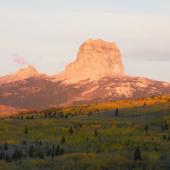


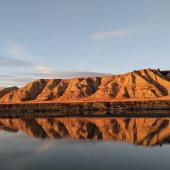








Leave a Comment Here